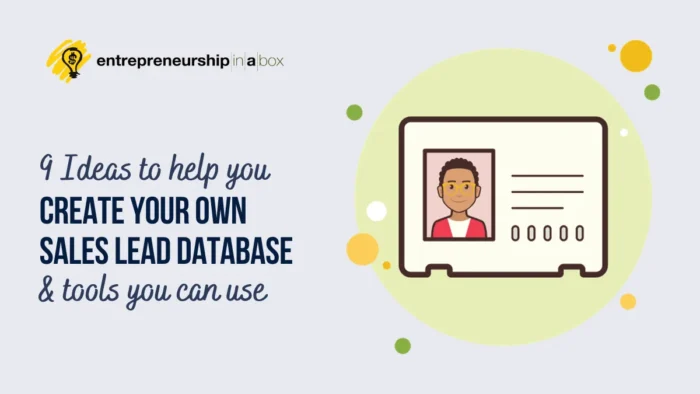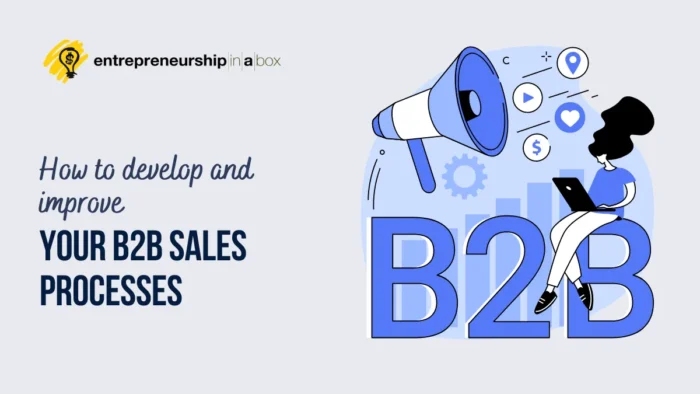Welcome to the complex yet rewarding business-to-business sales (B2B) world, where lead generation is pivotal in driving your company’s growth.
In B2B sales, lead generation is the cornerstone of successful business operations. However, it is often considered a challenge, primarily due to the longer sales cycle and the need for a more personalized approach than in the B2C process. Therefore, understanding the most effective tactics and strategies is vital.
So, we will provide you with 60 different B2B lead generation tactics and strategies. We invite you to explore these strategies and tailor them to your unique needs and objectives.
The Homework You Need to Do Before Starting With Tactics
Before you start to use the B2B sales tactics and strategies, we will cover here what you must finish with your homework:
Market research.
Conduct appropriate market research to identify your target market and learn about competitors. You don’t want your marketing efforts to not bring desired results for your B2B sales.
Who is Your B2B Target Audience?
Define the target customers or your ideal customers for your B2B sales process. You want to target prospective clients that are close to the buying decision. Learn about their pain points, problems, and challenges.
Who are Decision Makers?
When you identify prospecting clients through outbound or inbound marketing, you must identify the right decision makers for your B2B selling process.
Compelling CTA.
Create several compelling call-to-actions (CTAs) you will use to encourage actions by decision-makers that will lead to closing deals.
Let’s dissect this complex ecosystem and uncover 60 actionable tactics you can implement across your B2B sales process.
Related: Unlocking the Secrets to Lead Generation: A Beginner’s Comprehensive Guide
Content Marketing for B2B Sales
1. Blog Posts
Blog posts are essential to any B2B sales strategy because they provide a platform for businesses to share their expertise and knowledge with potential customers. But simply publishing a blog post isn’t enough. Promote your posts via email newsletters, social media, and other marketing channels to extend your reach.
2. Whitepapers
Whitepapers provide in-depth information about a specific industry challenge or topic, which is a great way to generate leads for your B2B sales. When you write the whitepaper, upload it to your website and ask for contact information in exchange for the whitepaper through a landing page specifically designed for this purpose.
3. Case Studies
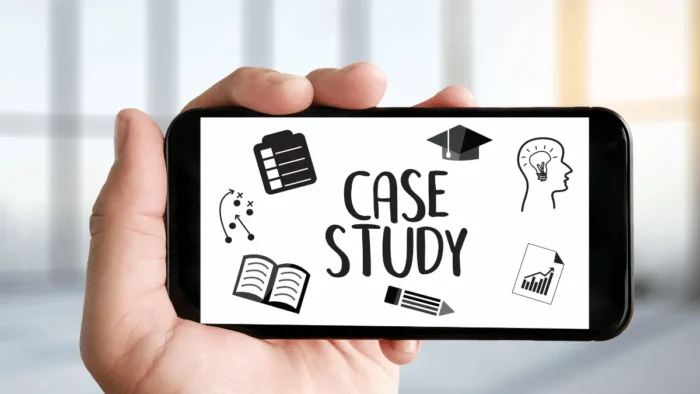
With case studies, you want to share success stories to showcase your expertise and build credibility. Look for customers who have seen significant benefits from your product or service. Your case studies will not only be a tool to generate leads, but your sales team will also have them and use them inside your B2B sales process.
4. Infographics
Using infographics for B2B sales can be an effective way to communicate complex information in a visually appealing way. Ensure that your infographics are shareable, encouraging others to share your infographics by including social sharing buttons, offering an embed code, or simply asking your audience to share.
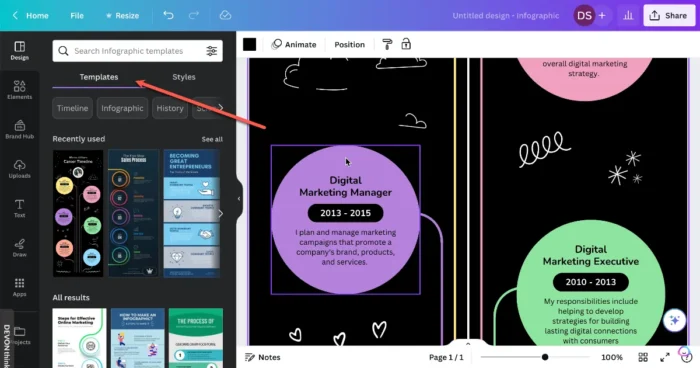
5. Podcasts
Start leveraging the growing podcast trend to reach and engage a broader audience. You can record podcasts about industry insights, advice, interviews with industry leaders, or discussions around relevant topics.
6. Video Marketing
Videos have proven to be more engaging than other forms of content. They are excellent at capturing attention and can communicate complex ideas in an entertaining and digestible format. You can use video marketing for educational content, demos, customer testimonials, company culture highlights, or expert interviews.
7. E-books
E-books can be used in various ways in your b2b marketing strategy – they can be given away for free to build trust or used as a lead magnet to gather contact information.
8. Webinars
Webinars offer real-time engagement, allowing you to interact directly with your audience. This interaction can lead to a deeper connection, increasing the likelihood of conversion. After the webinar, stay connected with your attendees if you want to move leads further along in the sales funnel.
Related: 30 Places to Find Prospects & Leads for Your Business
9. Guest Posting
By writing for websites other than your own, you can tap into the host site’s audience, expanding your reach. Many websites will probably allow you to include a bio with your post, and it is a good place to include your CTA, such as encouraging readers to visit your website, download a resource, or sign up for a newsletter.
10. Content Repurposing
By repurposing your content by transforming it into various formats, you can reach different segments of your audience who prefer different types of content consumption. For example, a blog post can be turned into a webinar, infographic, video, podcast, social media post, or e-book.
11. Gamification
Gamification can play an integral role in B2B sales processes. It involves applying game design elements in non-game contexts. Incorporating game elements like points, badges, leaderboards, or rewards can foster competition and motivate the leads to take a desired action.
Social Media
12. LinkedIn Prospecting
LinkedIn’s user base consists primarily of professionals, making it an excellent platform for finding potential B2B clients. Use LinkedIn’s advanced search feature to find potential leads based on industry, job title, location, and other criteria and engage with them by commenting or sharing their posts.
13. LinkedIn’s InMail Feature
LinkedIn’s InMail feature allows you to send messages to people you’re not connected with. These messages should be personalized and explain why you’re reaching out. If you’re serious about LinkedIn prospecting, consider subscribing to LinkedIn’s Sales Navigator. This tool offers advanced lead and company search, lead recommendations, and CRM integration, among other features.
14. LinkedIn Groups
LinkedIn Groups often revolve around specific industries or professions, giving you access to a targeted group of potential B2B leads. The key to success in LinkedIn Groups is genuine engagement. You must contribute to discussions, ask insightful questions, and provide valuable answers. Avoid sales pitches, as they can be off-putting on LinkedIn.
15. Twitter Chats
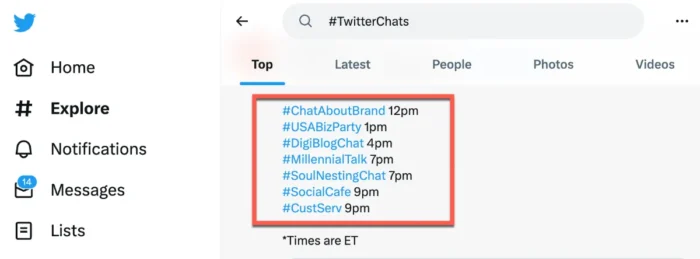
Twitter Chats are often underutilized even though they can be highly effective for B2B sales because of real-time discussion and networking, which can be harnessed to engage potential leads. Don’t just tweet, but interact. You want to build relationships and increase your visibility.
16. Instagram Stories
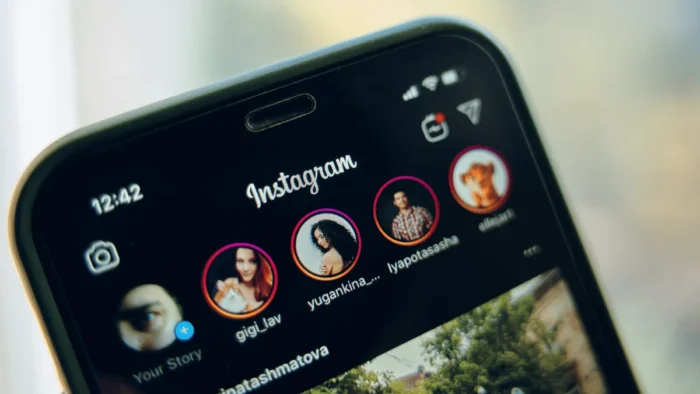
Instagram Stories offer a powerful, interactive, and highly visual way to engage your audience. Use your Stories to share useful tips, industry insights, or behind-the-scenes looks at your business to position you as an expert and a trusted source of information. Use polls and Q&As, and swipe-up links to engage your audience.
17. Facebook Groups
Facebook Groups often consist of individuals who share specific interests, which could align with your company’s industry or target audience. Your aim should be to contribute to the group with the posts, answer questions, and offer valuable insights or resources to establish authority and trust among members.
18. Social Listening
Social listening involves monitoring social media platforms for mentions of your brand, competitors, products, or pain points your business solves, then analyzing that data for insights and opportunities. Be ready to respond when someone mentions your brand, whether positively or negatively. This can improve your brand’s reputation and convert mentions into leads.
19. Social Media Advertising
Social media advertising allows you to target specific audience segments with personalized ads. For example, Facebook, LinkedIn, and Twitter offer you sophisticated targeting options to reach a specific demographic based on industry, interests, job positions, and more. And this is important for sales and marketing teams to target the right leads.
20. Influencer Partnerships
While influencer partnerships are often associated with business-to-consumer sales, they can also be highly effective for B2B sales because influencers have an audience that trusts their opinion. Partnering with influencers in your industry ensures your message reaches a relevant audience.
Email Marketing
21. Personalized Emails
Personalized emails make your communication more relevant, engaging, and effective, significantly boosting conversion rates. Remember to send emails based on the recipient’s behavior, such as following up after downloading a resource, visiting a particular page on your website, or attending a webinar.
22. Automated Email Sequences
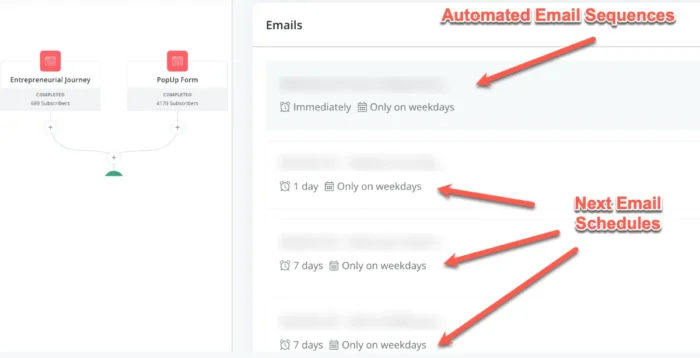
Automated email sequences can be triggered by specific actions, ensuring that your message reaches the prospect when it’s most relevant. Look at them like your sales and marketing teams that are doing their job.
23. Newsletters
Newsletters offer you a regular touchpoint for your audience, where you can provide value and build a relationship over time. Like everything else, look at your newsletter like your sales teams that work to generate B2B sales.
24. Email Courses
The serialized nature of an email course allows you to maintain regular contact with prospects, keeping your brand in mind and nurturing the relationship over time. Because signing up for an email course represents a significant commitment, the leads you generate will likely be highly engaged and interested in your B2B sales offerings. Again, look at email courses like one of your sales reps as a part of your B2B sales teams.
25. Cold Emailing
Cold emailing is a traditional yet effective B2B sales strategy where you reach out to potential leads who may not know about your business yet. When you use cold emails as a part of your sales strategy, your subject line is the first thing the recipient sees, so make sure it’s engaging and encourages them to open the email. Also, ensure your emails aren’t just sales pitches by your B2B sales teams but provide value.
Search Engine Optimization (SEO)
26. Keyword Research
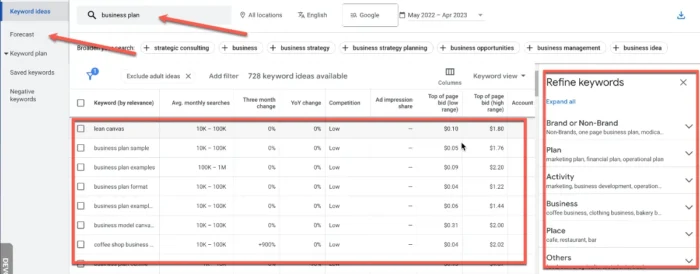
Keyword research is critical to SEO because you can improve your site’s visibility on search engines by identifying and using keywords your potential B2B customers are searching for. One important thing here is to try to understand the search intent or what information the users seek when using a particular search query. You need to focus on three types of search intents:
- Informational intent – search for general information. Using this intent, you want to build your B2B brand authority.
- Transactional intent – search for products and services to purchase. With these keywords, you want to generate sales.
- Commercial investigation intent – search to research and compare different options before purchasing.
27. On-Page SEO
Optimizing your web pages helps search engines understand your content better, which can increase your visibility in search results. Include your keywords in strategic places like the title tag, headers, meta descriptions, URLs, and throughout the content. Use relevant image file names, alt text, and captions for your images.
28. Off-Page SEO
Off-page SEO refers to the actions taken outside of your website to affect your rankings within search engine results pages (SERPs). This is the process of acquiring hyperlinks from other websites to your own. Contact non-competitor websites in your industry for guest blogging opportunities or partnerships to start building links.
29. Local SEO
If your business has a physical location or serves a specific geographical area, local SEO is a critical strategy. It involves optimizing your online presence to attract more business from relevant local searches on Google and other search engines. Start by claiming your Google Profile and allow your business to appear in Google’s Local Pack, Google Maps, and local search results.
Think about incentives to get as much as more positive reviews to increase your visibility.
30. Technical SEO
Technical SEO optimizes your website for the crawling and indexing phase to improve organic rankings. It’s called “technical” because it has nothing to do with the actual content of the website or with website promotion. Instead, the focus is on how well search engine spiders can crawl your site and index your content.
Paid Advertising
31. Google Ads
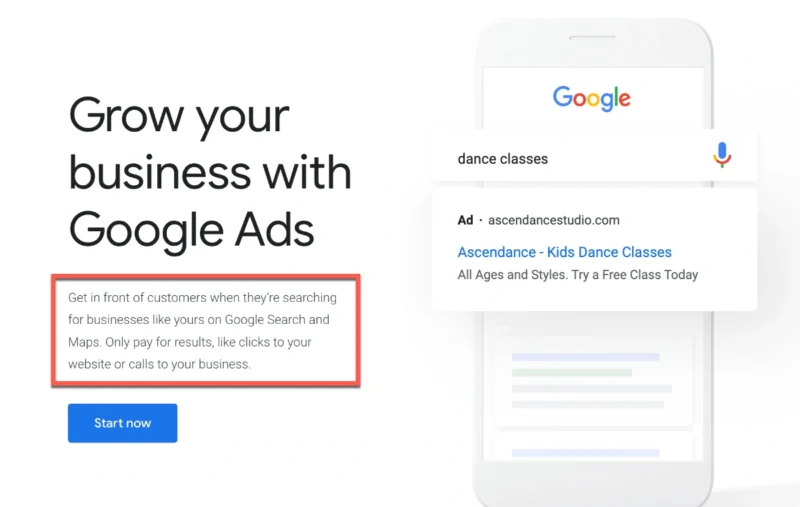
Google Ads is an online advertising platform where advertisers bid to display brief advertisements. With Google Ads, you can use robust targeting options like targeting by location, demographic information, or even specific devices.
Additionally, with remarketing, you can display ads to users who have previously visited your website. This can be a powerful way to engage users who have already expressed interest in your business.
32. Programmatic Advertising
This automated buying and selling of online advertising is a fast, efficient, and sophisticated way to deliver targeted and personalized ads to users. Also, with programmatic advertising, you can use precision-based targeting, ensuring your ads reach your business’s most likely interested people. It means they will be close to enter inside your B2B sales process.
You can check the best programmatic advertising platforms to use in 2023
33. Sponsored Content
Sponsored content is a type of advertising designed to blend in with the regular content on a partner’s website, making it less intrusive and more engaging than traditional ads. So, you need to partner with relevant websites or influencers to share sponsored posts.
Networking and Events
34. Trade Shows
Trade shows are events where companies within a specific industry showcase their products and services. They serve as an excellent B2B lead generation platform, offering the chance to interact directly with potential customers and other industry stakeholders.
Don’t forget to collect contact information because you want to start with your sales process.
35. Networking Events
Networking events bring together professionals from various industries to create new business relationships. They’re valuable for the B2B sales process because they offer opportunities for personal interaction and discovering potential clients or partners.
36. Public Speaking Engagements
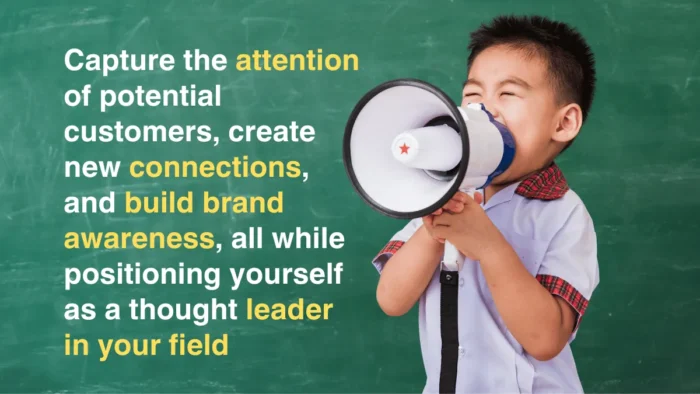
Public speaking engagements, such as conferences or seminars, can be a powerful way to generate leads for your B2B sales cycle. While your aim is to generate leads, avoid turning your talk into a sales pitch by one of your sales professionals. Instead, subtly promote your offerings and demonstrate how you can solve problems for your audience.
37. Online Forums & Communities
Online forums and communities are platforms where individuals gather to discuss specific topics, share insights, ask questions, and provide answers. They offer an excellent opportunity for B2B businesses to interact directly with potential customers. Regular participation is critical.
Sales and Outreach Strategies for Your Sales and Marketing Teams
38. Cold Calls
Cold calling is when your sales reps contact potential clients who haven’t previously expressed interest in your product or service. When using cold outreach as a part of your B2B sales process, you must respect the time of the person you want to communicate with. So, keep your message brief and to the point.
Your goal should be to start a conversation, not to close a sale with the first contact.
39. Sales Calls
Sales calls are one of the most traditional B2B sales strategies. You can use sales calls for your current customers or also for leads that already become part of your sales cycle.
Ensure your sales professionals, after the call, send afollow-up email summarizing your conversation, the following steps, and any additional resources they might find helpful.
40. Online Contests & Giveaways
Online contests and giveaways can significantly increase your brand’s exposure by reaching a broader audience, especially if entry conditions involve sharing or tagging others. They can be an excellent method for gathering valuable data about potential leads.
When people enter contests or giveaways, they often provide their contact information and other valuable data, such as their job role or industry.
41. CRM Utilization
Customer Relationship Management (CRM) systems are a cornerstone of modern B2B sales processes helping businesses manage their relationships with potential and existing customers. Ensure your sales team records all lead information and interactions in your CRM.
42. Account-Based Marketing and Account-Based Sales
Account-Based Marketing (ABM) and Account-Based Sales (ABS) uses focused sales techniques for the B2B sales process, where your marketing and sales teams work together to target best-fit accounts and turn them into customers. This may include both broad outreach efforts and one-to-one engagement with decision-makers.
43. Sales Training

Sales training is crucial for your B2B sales process. You need to equip each of your sales reps with the skills and knowledge they need to close deals effectively.
There are several types of training you can conduct:
- Product/service knowledge: They should be able to explain how your offerings solve a customer’s problem and the unique advantages you offer over competitors.
- Sales skills training: This includes foundational sales techniques such as prospecting, handling objections, negotiation, and closing deals techniques.
- CRM training: Your team should be proficient in using your CRM. This includes technical how-tos and best practices for logging lead interactions, managing lead data, and more.
- Soft skills training: This includes skills such as active listening, empathy, and communication skills. The best salespeople don’t just sell products; they build relationships.
44. Door-to-Door Sales
Door-to-door sales enable sales representatives to customize their pitches based on immediate feedback from potential clients. Face-to-face meetings can help build stronger relationships and trust, which is vital in B2B sales and fostering a buying decision.
Partnerships and Collaborations
45. Co-Marketing
Co-marketing, or partnership marketing, is when two companies collaborate on promotional efforts for a co-branded offer leveraging the strengths of two brands for both to expand their audience and generate more leads for their B2B sales process.
46. Affiliate Programs
This means encouraging other businesses (or individuals) with access to your target audience to promote your offerings in exchange for a commission. To achieve the best sales performance, provide your affiliates with all the necessary marketing and sales tools and resources to succeed.
47. Strategic Alliances
Strategic alliances involve two or more businesses collaborating to achieve mutual benefits, such as gaining access to new markets, improving products or services, or increasing customer value.
48. Joint Ventures
Joint ventures can be an excellent tool for generating leads for your B2B sales. A joint venture is when two or more businesses come together to carry out a new project or business activity. Both businesses contribute to the venture and share in the profits and losses.
Customer Retention and Referrals Inside Your Sales Process
49. Upselling
Upselling is a sales strategy to encourage B2B customers to purchase a higher-end product or add features to an existing product. It’s a valuable strategy because it boosts your revenue and maximizes customers’ value from your product or service.
50. Cross-selling
Cross-selling is all about offering complementary products or services to existing customers. This method not only helps in increasing sales but also contributes to enhancing customer relationships.
51. Customer Loyalty Programs
Customer loyalty programs are sales strategies used to incentivize repeat purchases, foster stronger relationships, and increase the lifetime value of your customers. They’re especially effective in the B2B sales process, where we have longer sales cycles and more complex relationships.
52. Referral Programs
Referral programs, sometimes referred to as referral marketing, incentivize your current customers to refer their colleagues, partners, and other businesses to your products or services. In the B2B sales process, where relationships and trust are crucial, referral programs can be particularly potent.
53. Customer Feedback
Customer feedback is a critical component of the B2B sales process. It helps you understand your client’s needs and preferences and allows you to continually improve your products, services, and overall customer experience.
54. Chatbots

Chatbots can be a game-changer in the B2B sales process. They offer 24/7 customer service, reduce workload, qualify leads, and even close sales. They can be effective tools to improve your sales cycle without spending on human resources.
Traditional B2B Sales Strategies for Your Sales Teams
55. Direct Mail Campaigns
Although direct mail might seem like a relic of the past in our digital age, it can be an effective part of a B2B sales process when used correctly. Direct mail works best when it’s highly targeted.
Whether you want recipients to call a sales rep, visit your website, or take advantage of a special offer, make sure it’s obvious what the next step is.
56. Radio Advertising

Radio stations often have a well-defined demographic, enabling businesses to target their ads to a specific audience more likely to be interested in their product or service.
57. TV advertising
Television continues to have a broad reach and remains one of the most common ways to consume content. Advertising on TV can get your message in front of a large audience. For B2B sales, a well-crafted TV ad can add credibility and enhance your brand image.
58. Print Advertising
Print publications often have loyal readerships, and advertising in these can lend your business credibility. For instance, being featured in a reputable trade magazine can create a positive impression of your business.
59. Press Releases
A well-written press release can help your lead generation for your B2B sales process. If you use them in the right way, they can enhance your company’s credibility. When a respected publication picks up your release, it’s like a third-party endorsement of your company.
60. Billboards & Outdoor Advertising
Billboards are hard to ignore and can reach a broad audience, from local commuters to international business travelers. Their large size and high frequency of impressions can significantly increase brand awareness and recognition.
How to Use These Tactics for B2B Sales and Leads Generation?
It’s not about implementing all 60 strategies at once but rather about selectively deploying the tactics that align with your business model and industry and continually optimizing them based on outcomes.
But don’t be afraid of trial and error. Some of these B2B sales strategies might click right off the bat, while others may require a bit of tweaking and experimentation.
Remember, every ‘error’ is a stepping stone towards a more effective strategy, a richer understanding of your market, and a better relationship with your potential leads.
So, fearless entrepreneurs and skilled sales team, we encourage you to dive in, get your hands dirty, and apply these tactics. Fine-tune them according to your needs, measure the results, make necessary adjustments, and most importantly, keep pushing forward.
Conclusion
We’ve covered quite a bit of ground in this comprehensive exploration of B2B sales, offering you a smorgasbord of options to drive your business growth.
Remember, each strategy is a tool in your arsenal. Use them wisely, and don’t avoid customizing these tactics to fit your unique needs.
B2B sales is not a sprint but a marathon. It requires patience, persistence, and a bit of good old trial and error.
Now, you might wonder if there’s a magical formula or a secret handshake to crack the code of B2B sales. While we wish we could say ‘yes’ and make things easier, the truth is every business is unique.


